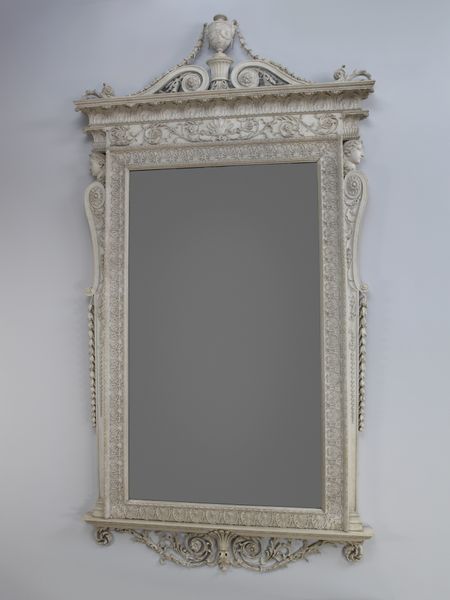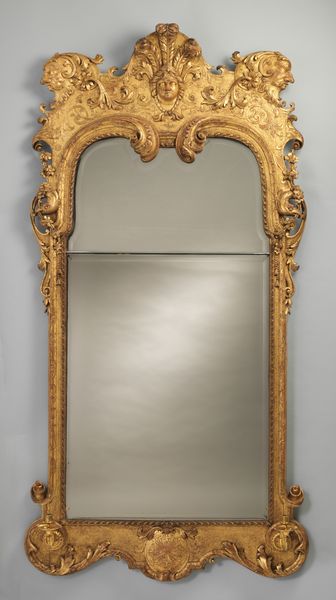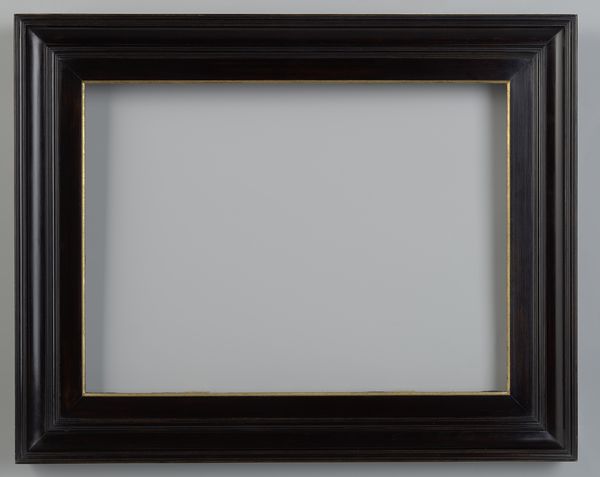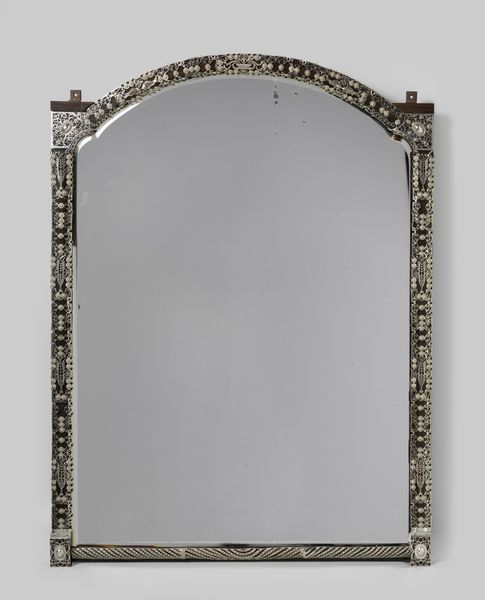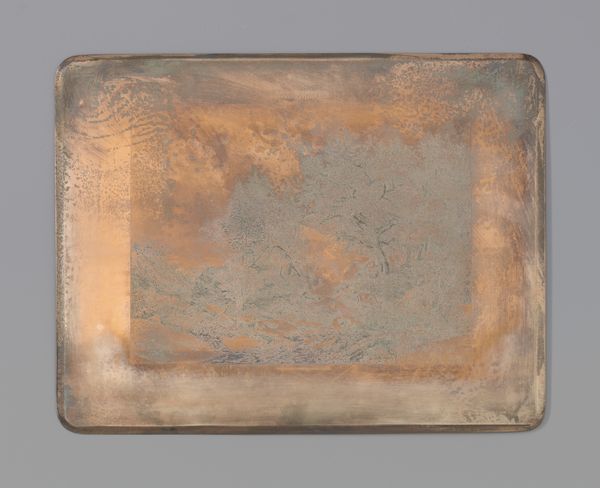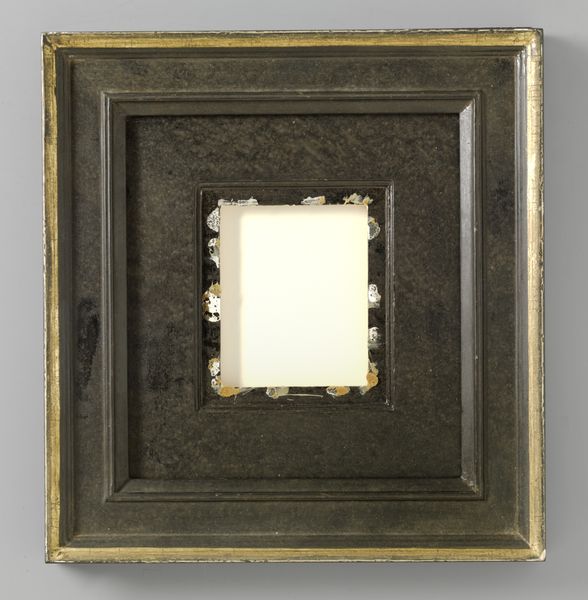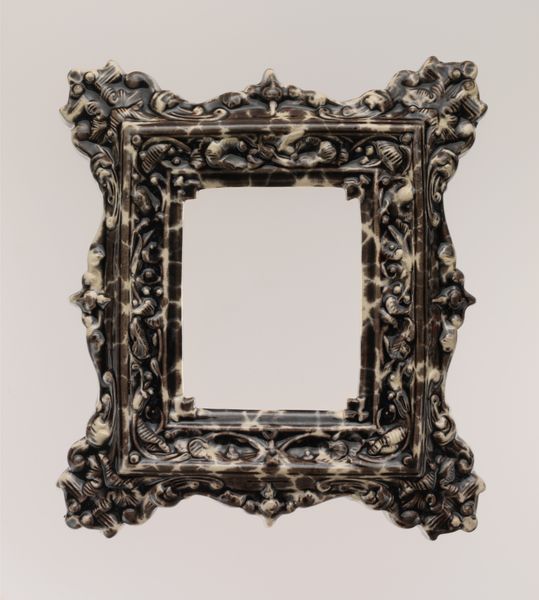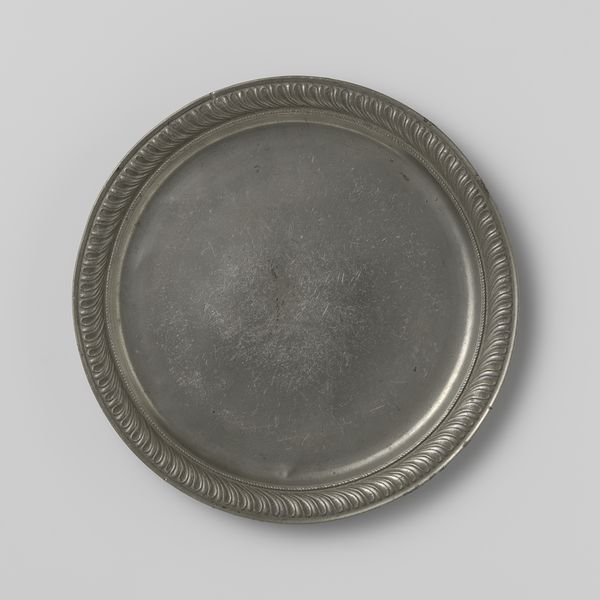
Mirror with cresting (part of a toilet service) 1683 - 1684
0:00
0:00
silver, metal, metalwork-silver, sculpture, engraving
#
silver
#
baroque
#
metal
#
historical fashion
#
metalwork-silver
#
sculpture
#
decorative-art
#
engraving
Dimensions: Overall, assembled (confirmed): H. 22 7/16 x W. 20 1/4 in. (57 x 51.4 cm) Overall mirror (confirmed): H. 16 7/16 x W. 20 1/4 in. (41.8 x 51.4 cm) Overall cresting (confirmed): H. 6 x W. 20 1/4 in., 17 oz. 14 dwt. (15.2 x 51.4 cm, 0.55 kg.)
Copyright: Public Domain
Curator: At first glance, this mirror projects an air of understated elegance, the silver reflecting light in a soft, diffuse way. Editor: Indeed. Let’s delve into its origins. This piece, dated from 1683 to 1684, is titled "Mirror with cresting," and it’s a fragment of a toilet service created by William Fowle. As the museum label says, it is rendered in silver. What socio-political implications do you find in this artwork? Curator: I’m immediately struck by the tension embedded within this decorative object. A looking glass— a symbol of vanity, self-reflection, but made during a time of stark social inequality. The gleaming surface reflecting back only those who could afford such luxury. Is this a critique of that opulence, or a celebration of it? Editor: I'm more drawn to the engraved imagery topping the mirror. Notice the figures, almost narrative in style, contained within the cresting. They resemble classical depictions, perhaps alluding to mythological stories or allegorical scenes that resonated with the owner's understanding of beauty and knowledge. Curator: I wonder, however, whether "classical" is code for the projection of power. During this period, classical imagery was often used to legitimize authority. How does this decorative piece subtly endorse a particular social order and reinforce prevailing ideas about the role of beauty in power structures? Editor: A valid point. Think about the symbolic weight silver carried, even beyond its monetary value. Consider the mirror as a portal to a reflection, a reminder of mortality and appearance in the era before photography. Does the silver metal imply purity, value, even incorruptibility? Curator: Considering how intimate this object would have been to its owner—used daily for grooming, and presentation—it prompts me to reflect on issues of self-perception within highly regulated societal contexts. Whose beauty ideals were reflected back in this looking glass? Editor: Beauty was absolutely currency then, influencing marriages, alliances. The silver itself reflects this currency in a way, always a solid economic choice, holding lasting value for generations. Curator: A tangible, shining piece of the politics of beauty. Editor: Yes, beauty with staying power. It certainly does give you something to think about!
Comments
No comments
Be the first to comment and join the conversation on the ultimate creative platform.
